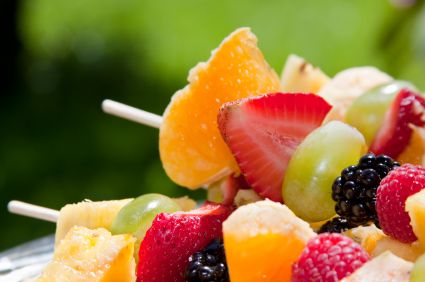What is Eating Healthy?

What is eating healthy?
Michael Pollan in his book, In Defense of Food, answers this question by saying, “Eat real food. Not too much. Mostly plants." While this may seem like a simple answer, it actually encompasses most of the main eating healthy principles.
Eat real food.
It seems like every time you go to the grocery store, there are more processed and packaged foods for sale and fewer foods that could be classified as whole food, found in nature, recognizable as something that was grown or produced naturally.
If you remove the soda aisle, the snack aisle and all the other processed foods, you only have the produce section, a few of the dairy and frozen food cases, some bottled, canned and dried “real” foods, and part of the meat area.
This means that we have gotten out of the habit of eating foods “our grandmother would recognize,” as Pollan says, and exchanged them for highly processed “pseudo foods” that are loaded with sugar, salt, preservatives and many unnatural chemicals. These foods are attractively packaged and promoted with ads and coupons, so that you end up thinking you can’t live without them.
What is eating healthy? It’s choosing to shop for fresh and frozen fruits and vegetables, lean meats (preferably organic or grass-fed), whole grains, legumes, healthy fats and dairy (also better if organic). It also means avoiding or limiting products with a long list of unrecognizable ingredients and those that provide little or no nutrition except for calories.
Not too much
Unlike much of the rest of the world, one of the biggest malnutrition problems we have in the U.S. is the issue of obesity. Eating too much, even too much healthy food causes a strain on your entire body. All of your digestive organs, including your stomach, pancreas, liver and intestines will eventually be adversely affected if you make overeating a habit. In addition, obesity puts a load on your heart and a burden on your joints. The older you get, the more difficult your life will be if you find yourself overeating on regular basis.
What is eating healthy? It’s figuring out how much food your body actually needs and not eating more than that most of the time. It’s educating yourself about the foods you eat, so you can make a sensible diet plan that will nourish you without causing you to become over nourished.
Click on this link for help in estimating calorie needs.
Learn about serving sizes for various foods and stick to them. Don’t kid yourself about how much you are eating, but instead be brutally honest about the portions you are choosing.
Once you get in the habit of eating less, you will find yourself feeling better with less indigestion, gas and over time your stomach will adjust to feeling full with less food.

Mostly plants
This is probably the most controversial part of Pollan’s dictum. I don’t think he is saying you need to be a vegan to be healthy. He is merely suggesting that when you plan your menus, plant foods should make up a large portion of your food choices.
This is because in the case of animal foods, a little goes a long way. A small piece of meat or fish, some cheese or an egg with your meal or snack will provide plenty of protein and the rest of your meal should consist of selections of fruit, vegetables, whole grains and legumes, which incidentally will also provide some healthy protein.
It is perfectly fine to choose plant-based proteins for some meals, as these are easy to digest and provide fiber at the same time. If you do a lot of meatless meals, you will need to learn about complementary proteins, which are those protein foods that, when combined, provide a complete protein.
Click here for more information about complementary proteins.
What is eating healthy?
It’s eating more vegetables, fruits, legumes, whole grains with less emphasis on animal products. Eggs, dairy, meat, poultry and fish can play an important part in good nutrition--just don't overdo. Try some meatless meals a few times a week and when you fill your plate, make sure that at least half of it is covered with vegetables.
Note: I suggest that you choose organic dairy and eggs and meats, since these will have fewer pesticides and other chemicals that are concentrated in the meat and dairy products that you eat. These animals are also treated more humanely, which seems better for everyone. Since toxins are stored in the fat of animals, trimming the visible fat and choosing low-fat versions will help if you can't buy organic.
What is eating healthy?
Here are some specific things you can do to eat healthy:
-Eat a balanced diet with a ratio of 40-30-30 of good carbs, low-fat protein and good quality fats respectively.
-Eat a variety of fresh, whole foods, including selections from the five food groups including Vegetables, Fruits, Grains, Meat/Legumes and Dairy.
-Include at least 5 servings of fruits and vegetables each day, with an emphasis on vegetables.
-Eat fewer packaged foods and fast foods, which are generally over-processed, full of unwanted chemicals.
-Include a serving of low-fat versions of good quality protein with each meal and snack.
-Choose leaner meats.
-Limit your intake of foods that contain added sugar and salt.
-Eat good carbs such as whole grains whenever you can.
-Choose unsaturated fats such as olive oil, avocado, nuts and seeds.
-Include fiber foods with each meal so that you get a total of 25-30 grams of fiber each day.
-Eat colorful foods for their important phytonutrients.
-Stay away from foods that provide calories but little nutrition.
-Drink 6-8 glasses of filtered water each day, while avoiding soft drinks and limiting fruit juice.
-Find foods that you enjoy eating that are also good for you.
What is eating healthy?
It’s choosing foods most of the time that are found in nature. It’s eating the appropriate amount of those foods most of the time. It’s taking advantage of the wonderful plant foods that add so much flavor, nutrition and value to your menu plans.

